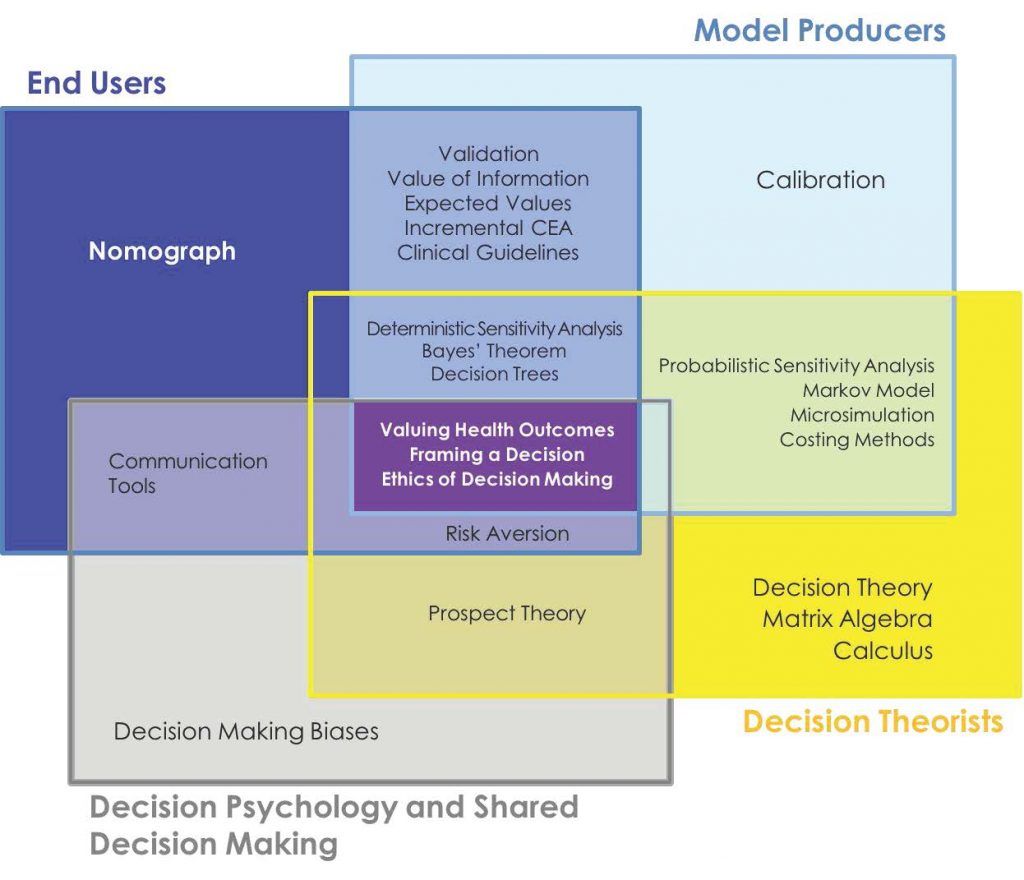In conjunction with the MDM Teaching Interest Group, faculty Ankur Pandya and incoming doctoral student Lyndon James developed a framework for understanding the variety of students engaged in decision science curricula. The diagram displays some key examples of the curriculum for each group.
End Users are typically clinicians or policy makers, and the majority of their interaction with the field is by consuming the decision analytic literature and related guidance.
Model Producers learn the methods of decision analysis in more depth, so that they can produce useful models to inform decision making.
Decision Psychology and Shared Decision Making students wish to learn how people decide, whether or not that follows rational decision-making models and rules, and how best to facilitate decision making. The fields of decision psychology and shared decision making each deserve their own space, but were grouped here for simplicity in the diagram.
Theorists students must learn the axiomatic method of economic reasoning and mathematics underlying decision analytic methods.

Excellence in teaching, they concluded, lies in understanding the needs of the specific audience. They hope that this framework advances this understanding to continually improve the pedagogy of decision science.
Learn more: Read the SMDM newsletter (Summer 2018) for more information about this story.
Related news: Uwe Siebert Becomes New President of SMDM
Related news: Teaching Middle School Students
